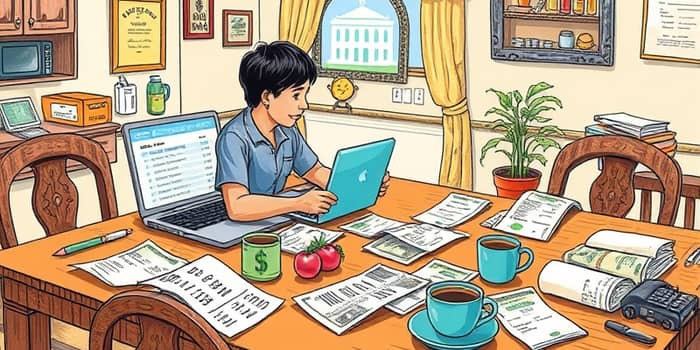
Every individual, family, organization, or government crafts budgets with an underlying hope: that resources will stretch to meet every aspiration. Yet when budgets lean too heavily on dreams, they risk collapse under the weight of reality. Spending should mirror daily realities, not wishful thinking. This article explores why budgets must align with actual circumstances—and how to build plans that foster stability and sustainable growth.
A budget is more than a financial forecast or a wish list. At its core, a budget is a practical plan detailing how resources will be allocated over a given period. Whether for a household, business, or government, the most effective budgets incorporate real expenditure data and adjust for historical patterns.
Consider the U.S. government in FY2025. Intended spending may promise education, infrastructure, or healthcare expansions, but actual outlays reached $4.85 trillion. Revenues fell short, creating a sizable deficit. This illustrates a fundamental principle: budgets based only on best-case scenarios ignore everyday costs, leaving little room for unexpected events.
Idealistic budgets often omit small but frequent expenses: the streaming subscription renewed without notice, the extra coffee each morning, or the spontaneous weekend trip. Over time, these overlooked items compound into stressful financial surprises that derail plans.
Common manifestations include:
At the federal level, projections of rising revenues can clash with political promises. When receipts lag, spending commitments become unsustainable, driving debt higher. The U.S. federal debt could reach 118% of GDP by 2035 without realistic adjustments.
Gen Z’s embrace of “loud budgeting” reflects a cultural shift toward transparency and practicality. Young adults openly share their financial boundaries on social media, celebrating both sacrifices and successes. By acknowledging limitations—rather than hiding them—they foster community support and accountability.
Equally, the move from ownership to access—streaming instead of purchasing media, car-sharing instead of owning vehicles—demonstrates a practical approach to budgeting. These choices are guided by current needs and affordability, not by idealized notions of permanent ownership.
Effective budgeting demands confronting real habits. Many people hold aspirational identities—the versions of themselves who save religiously, never overspend, and invest wisely. But actual behavior often tells a different story. Acknowledging “guilty pleasures” and frequent impulse buys allows for more accurate forecasts.
Regular reviews, comparing planned expenses with actual bank statements, reveal gaps. Recording every transaction for a few months unveils patterns: the weekend eat-out budget is consistently exceeded by 25%, or utility bills spike every winter. By reconciling these findings, budgets become anchored in real-life spending.
Transforming an idealistic budget into a realistic one involves several key steps:
Regular adjustments promote lasting progress, ensuring that budgets evolve alongside life’s changes.
When budgets fail to capture actual needs, the fallout can be severe at all levels:
For individuals, inadequate budgets mean unmet savings goals and heightened stress. On a national scale, structural mismatches between ambition and income fuel unsustainable debt—today’s idealism becomes tomorrow’s crisis.
Realistic budgeting extends beyond personal finance. Sustainable development and poverty reduction rely on resource plans that address actual needs. When governments allocate funds based on optimistic projections, vulnerable populations often bear the brunt of shortfalls.
Aligning budgets with measurable realities can enhance efficiency and equity. Resources flow to programs proven to work—food assistance, healthcare, and education—rather than aspirational projects that lack adequate funding.
“Spending should reflect how you actually live, not merely how you hope to live someday.” This simple maxim underpins every successful budget. By grounding financial plans in actual spending habits and reliable data, individuals and institutions can achieve stability, reduce stress, and build trust.
Whether you’re balancing a household ledger, managing corporate finances, or crafting public policy, remember: budgets aligned with real life yield sustainable growth and peace of mind. Embrace honesty in your planning, track your realities, and refine your forecasts. The result: a budget that reflects not just your ideals, but your actual way of life.
References













